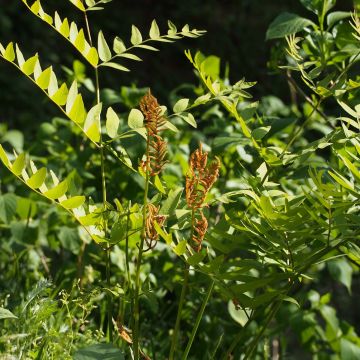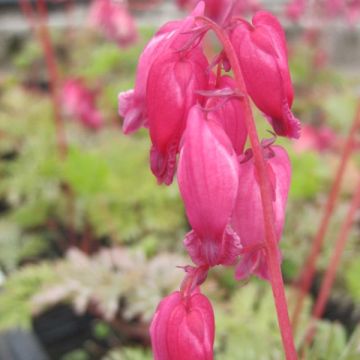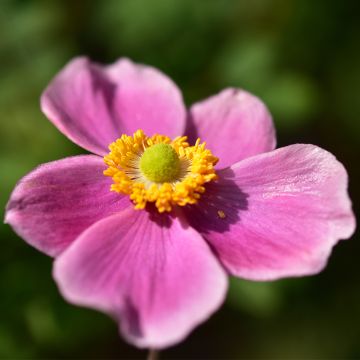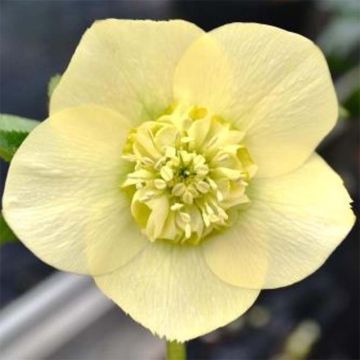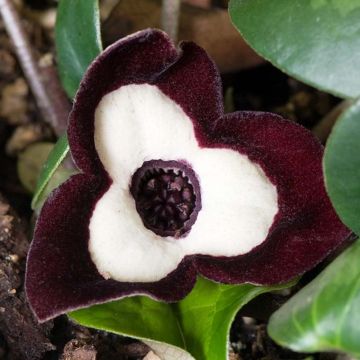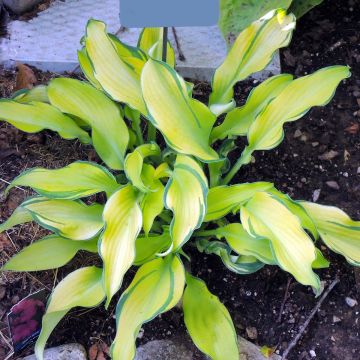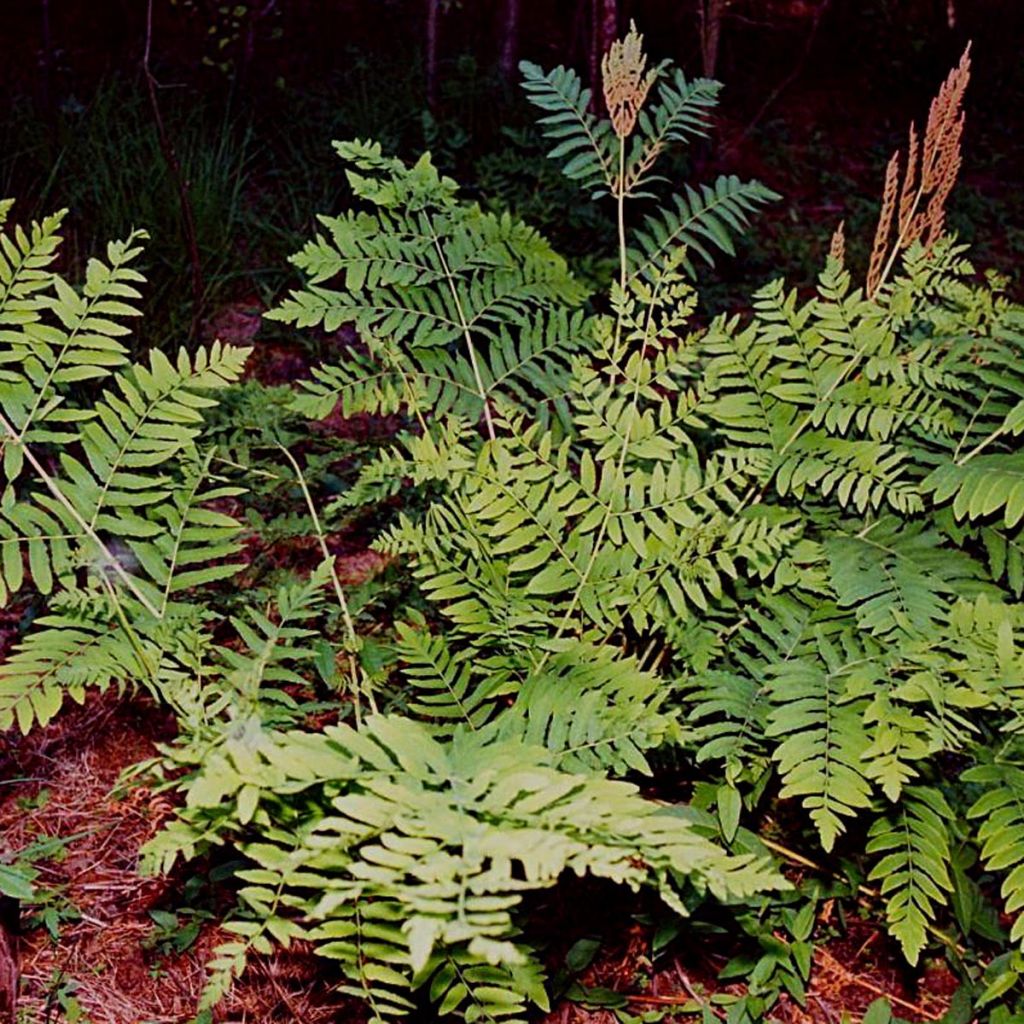

Osmunda regalis - Royal Fern
Osmunda regalis - Royal Fern
Osmunda regalis
Royal Fern, Flowering Fern
This item cannot be shipped to the selected country
Delivery charge from €5.90
Delivery charge from €5.90
More information
Schedule delivery date,
and select date in basket
This plant carries a 12 months recovery warranty
More information
We guarantee the quality of our plants for a full growing cycle, and will replace at our expense any plant that fails to recover under normal climatic and planting conditions.
From €5.90 for pickup delivery and €6.90 for home delivery
Express home delivery from €8.90.
From €5.90 for pickup delivery and €6.90 for home delivery
Express home delivery from €8.90.

Does this plant fit my garden?
Set up your Plantfit profile →
Description
The Royal Fern is the largest fern that can be found in our regions. It is a bit like the "tree fern" of cold countries because it forms a "trunk" at the base over time, and it can live for over a century.
Osmunda regalis is a calcifuge perennial (that doesn't like limestone), with long deciduous petiolate leaves that can reach 2 metres (7 feet), which regrows each year from a spongy rhizome.
From a thick stump, in spring first woolly and brittle croziers unfurl, revealing the sterile fronds, majestic, wide and upright, strongly divided, green in color. Then in summer, the fertile fronds follow, longer but thinner, upright and stiff. These latter end in spikes of golden brown sporangia that resemble an inflorescence, earning it the name of Flowering Fern.
The Royal Fern grows in highly humid or flooded environments, on acidic substrates (sands, clays, peat) without limestone; it doesn't tolerate excessive sunlight or too dense shade. With a lot of shade, this Osmunda will develop fewer fertile fronds but will tend to spread more, reaching 3 metres (10 feet) in width. In a clearer situation, numerous fertile fronds will appear from a more stocky, compact plant.
You can plant the Royal Fern at the edges of ponds, streams, and wet rockeries, either alone near a rocky area by the water where it will become the queen, or in shaded areas in large masses.
We cultivate all species near our stream, in the marshy soil of the banks where they show their full value. Its mere presence gives a fantastic character to the most ordinary stream. In its natural protected state, it is found in clear peaty or marshy forests, in peaty coppices, alongside willows or alders.
Avoid mixing it with other ferns, but rather associate the Osmunda regalis with flowers of the undergrowth with which it won't compete. The delicate blooms of Masterworts or Astilbes are very beautiful among ferns. They make great companions for small bulbs such as Snowdrops (Galanthus), which will have their yellowing foliage hidden by the developing fronds, or for purple-flowered Iris versicolour or yellow Iris pseudacorus. The decorative and colourful foliage of Heucheras and Saxifrages is remarkable. A perfect aesthetic harmony can be achieved with certain Japanese maples (Acer palmatum) with laciniated and finely toothed foliage, in cool and sheltered environments from the sun, also superb in autumn with the mix of warm colours.
The genus name of this fern, Osmunda, has many origins attributed to it. This name was given by Mathias de l'Obel. It could come from Osmund, a Germanic deity equivalent to Thor in Norse mythology. Or perhaps it comes from the Latin os, "mouth," and mundo, "to purify, clean," in relation to the antiputrid properties of certain ferns. Osmund is also originally a Saxon name meaning the peace of the hearth: from mund, "peace," and os, "house." Its species name, regalis, means "royal" in Latin.
Report an error about the product description
Osmunda regalis - Royal Fern in pictures


Flowering
Foliage
Plant habit
Botanical data
Osmunda
regalis
Osmundaceae
Royal Fern, Flowering Fern
Central Europe
Other Osmunda
Planting and care
This slow-growing fern should be planted near a stream in a marshy soil or in a cool understory, in a humus-rich soil without limestone. The deciduous foliage often displays beautiful autumn colours before entering dormancy.
Planting period
Intended location
Care
-
, onOrder confirmed
Reply from on Promesse de fleurs
Shade-loving perennials
Haven't found what you were looking for?
Hardiness is the lowest winter temperature a plant can endure without suffering serious damage or even dying. However, hardiness is affected by location (a sheltered area, such as a patio), protection (winter cover) and soil type (hardiness is improved by well-drained soil).

Photo Sharing Terms & Conditions
In order to encourage gardeners to interact and share their experiences, Promesse de fleurs offers various media enabling content to be uploaded onto its Site - in particular via the ‘Photo sharing’ module.
The User agrees to refrain from:
- Posting any content that is illegal, prejudicial, insulting, racist, inciteful to hatred, revisionist, contrary to public decency, that infringes on privacy or on the privacy rights of third parties, in particular the publicity rights of persons and goods, intellectual property rights, or the right to privacy.
- Submitting content on behalf of a third party;
- Impersonate the identity of a third party and/or publish any personal information about a third party;
In general, the User undertakes to refrain from any unethical behaviour.
All Content (in particular text, comments, files, images, photos, videos, creative works, etc.), which may be subject to property or intellectual property rights, image or other private rights, shall remain the property of the User, subject to the limited rights granted by the terms of the licence granted by Promesse de fleurs as stated below. Users are at liberty to publish or not to publish such Content on the Site, notably via the ‘Photo Sharing’ facility, and accept that this Content shall be made public and freely accessible, notably on the Internet.
Users further acknowledge, undertake to have ,and guarantee that they hold all necessary rights and permissions to publish such material on the Site, in particular with regard to the legislation in force pertaining to any privacy, property, intellectual property, image, or contractual rights, or rights of any other nature. By publishing such Content on the Site, Users acknowledge accepting full liability as publishers of the Content within the meaning of the law, and grant Promesse de fleurs, free of charge, an inclusive, worldwide licence for the said Content for the entire duration of its publication, including all reproduction, representation, up/downloading, displaying, performing, transmission, and storage rights.
Users also grant permission for their name to be linked to the Content and accept that this link may not always be made available.
By engaging in posting material, Users consent to their Content becoming automatically accessible on the Internet, in particular on other sites and/or blogs and/or web pages of the Promesse de fleurs site, including in particular social pages and the Promesse de fleurs catalogue.
Users may secure the removal of entrusted content free of charge by issuing a simple request via our contact form.
The flowering period indicated on our website applies to countries and regions located in USDA zone 8 (France, the United Kingdom, Ireland, the Netherlands, etc.)
It will vary according to where you live:
- In zones 9 to 10 (Italy, Spain, Greece, etc.), flowering will occur about 2 to 4 weeks earlier.
- In zones 6 to 7 (Germany, Poland, Slovenia, and lower mountainous regions), flowering will be delayed by 2 to 3 weeks.
- In zone 5 (Central Europe, Scandinavia), blooming will be delayed by 3 to 5 weeks.
In temperate climates, pruning of spring-flowering shrubs (forsythia, spireas, etc.) should be done just after flowering.
Pruning of summer-flowering shrubs (Indian Lilac, Perovskia, etc.) can be done in winter or spring.
In cold regions as well as with frost-sensitive plants, avoid pruning too early when severe frosts may still occur.
The planting period indicated on our website applies to countries and regions located in USDA zone 8 (France, United Kingdom, Ireland, Netherlands).
It will vary according to where you live:
- In Mediterranean zones (Marseille, Madrid, Milan, etc.), autumn and winter are the best planting periods.
- In continental zones (Strasbourg, Munich, Vienna, etc.), delay planting by 2 to 3 weeks in spring and bring it forward by 2 to 4 weeks in autumn.
- In mountainous regions (the Alps, Pyrenees, Carpathians, etc.), it is best to plant in late spring (May-June) or late summer (August-September).
The harvesting period indicated on our website applies to countries and regions in USDA zone 8 (France, England, Ireland, the Netherlands).
In colder areas (Scandinavia, Poland, Austria...) fruit and vegetable harvests are likely to be delayed by 3-4 weeks.
In warmer areas (Italy, Spain, Greece, etc.), harvesting will probably take place earlier, depending on weather conditions.
The sowing periods indicated on our website apply to countries and regions within USDA Zone 8 (France, UK, Ireland, Netherlands).
In colder areas (Scandinavia, Poland, Austria...), delay any outdoor sowing by 3-4 weeks, or sow under glass.
In warmer climes (Italy, Spain, Greece, etc.), bring outdoor sowing forward by a few weeks.


































